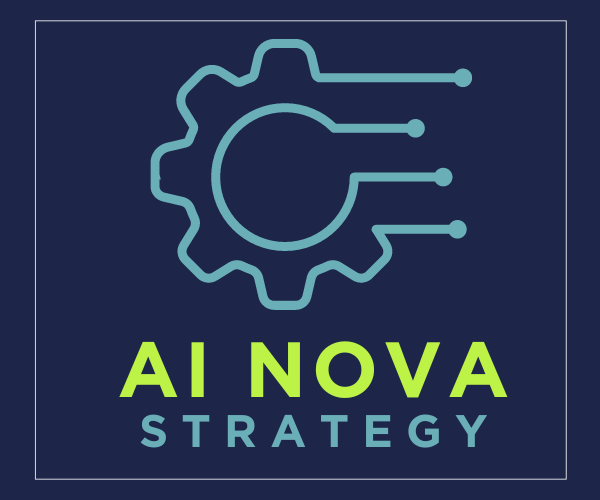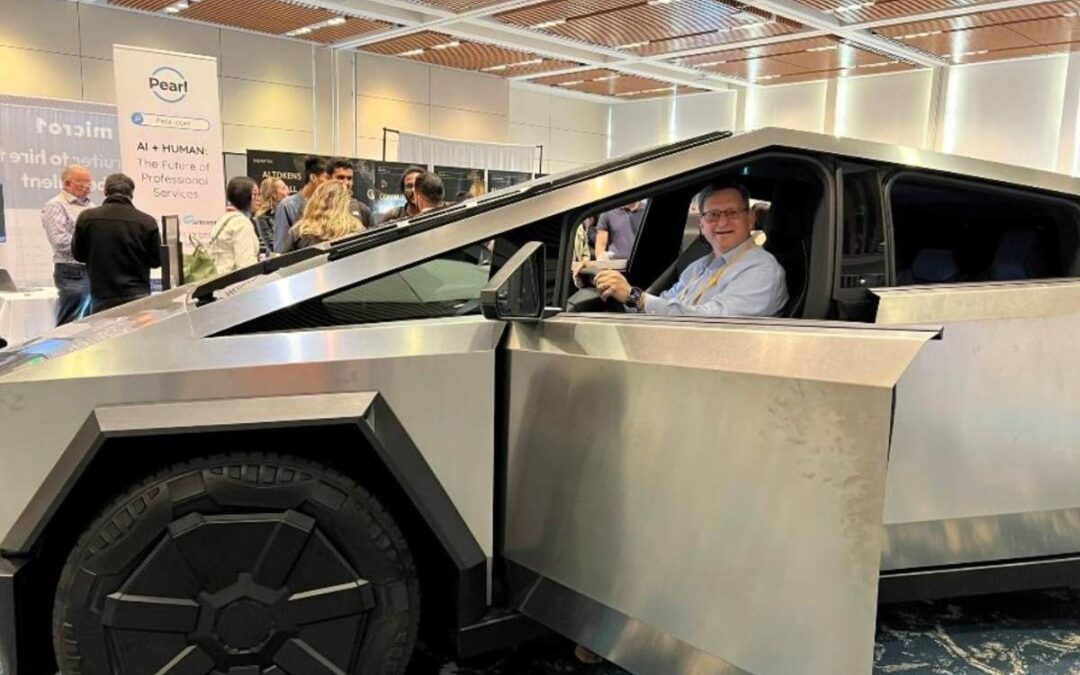As an AI business consultant specializing in biotech, biopharma, and fintech transformation, I attended the GenAI Summit at the Santa Clara Convention Center from November 1 to 3, 2024. My goal was to immerse myself in the latest GenAI developments and evaluate their potential for advancing life sciences and digital healthcare – key areas where AI Nova Strategy provides strategic consulting services.
The Exhibition Experience: In the exhibition room, I experienced firsthand how AI is transforming traditional industries.
The Tesla truck display, with its minimalist interior and AI-ready infrastructure, exemplified how artificial intelligence is reshaping even conventional sectors – a transformation journey that mirrors what we help our consulting clients navigate.
Summit Overview: The conference focused primarily on reducing GenAI hallucinations and showcasing AI startups. As an AI consulting firm, we noted that while there were numerous presentations on technical implementations, only one pitch addressed healthcare, and none covered biotech or biopharma – highlighting the opportunity gap our firm addresses.
I. Productionizing GenAI: Lessons for Business Implementation
Lukas Biewald, CEO, @Weights&Biases presented the first talk that I attended. He said that 30% to 40% of GenAI projects are stuck in production. Projects are “easy to demo but hard to productionize.” One of the biggest problems is disappointment. “Going from 90% to 92% accuracy is hard.” Management sees the money being spent and the progress and pulls the plug.
Software (SW) and AI development are very different. SW development is linear, whereas AI development is experimental. With SW, your code is your IP, whereas with AI, what you learn is your IP. You can’t just look at an AI model file. He also stated that you should be able to swap in a new foundation model. Your application’s infrastructure and workflow should be designed to be model-agnostic.
These insights align with what we’ve observed in our AI business consulting practice, particularly when helping companies move from proof-of-concept to production.
II. The Future of RAGs in GenAI
Tengyu Ma of Voyage AI talked about using Retrieval-Augmented Generation (RAG) to bring proprietary data into an LLM. RAG finds relevant information from a knowledge base and uses that information to create accurate responses.
Ma stated that multimodal embedding models are the future. They transform unstructured data from multiple modalities(PDF, PPT, and images) into a shared vector space. Vectors are the semantic meaning of data (such as words, images, or concepts) in a format that allows for efficient computation and comparison. AI multimodal embedding models can directly vectorize inputs containing interleaved text + images and exhibit near-perfect performance on mixed-modality searches. For biotechnology work, a researcher could search through microscopy images using technical descriptions, find relevant research papers based on diagram similarity, match patient scan images with written diagnostic criteria, and analyze relationships between visual lab results and written protocols. Voyage AI currently provides one multimodal embedding model [voyage-multimodal-3 https://docs.voyageai.com/docs/multimodal-embeddings].
Thinking further into the future, Ma showed two slides:
RAG today with lots of “tricks (in orange)” like GraphRAG, corrective RAG, etc.
The RAGs of tomorrow will have more powerful AI models and less “tricks”.
I have mentioned “embedding models”. “Rerankers” pictured in the slides are sophisticated components in the information retrieval pipeline that perform a second, more detailed evaluation of search results to improve accuracy.
For our biotech and biopharma consulting clients, these developments in multimodal embedding models represent significant opportunities to accelerate research and improve clinical outcomes.
III. AI Agents
Bhavin Shah, CEO of Moveworks, discussed their work with AI Agents. AI Agents plan, observe, and act autonomously. Getting the autonomous component to work is hard.
He showed a slide of where AI projects fail: 1. “Misaligned enterprise-wide strategy and goals 2. Lack of vision alignment across business and technology leaders, 3. Inconsistent monitoring of outcomes.”
At AI Nova Strategy, we can help businesses avoid these problems.
Arind Jain of Glean compared AI agents to Interns. A comparison I have heard many times before.
IV. From Seed to Scale: Navigating the Challenges of Building AI Startups with Venture Capital
This was the final panel I listened to at the meeting. It was a very distinguished panel that included Jon Shalowitz, Managing Director of Union Square Advisors LLC; David Hefter, Director at BlackRock; Rocky Yu, Founder & CEO of AGI House; Murray Newlands, Founder of Open Future Form; and moderator Scott Clark, CEO of Distributional.
Clark asked the group for mistakes they had seen. Shalowitz stated that founders don’t think enough about exits, Yu, don’t talk to users enough, Hefter, being in another company’s roadmap, Newlands, building for now and not the future (for example, it should be building for when communities have autonomous vehicles.). Shalowitz cautioned about investing in AI startups with a 20x evaluation while SaaS has typically a 2x evaluation. He stressed for startups to have a director of partnerships, because partnerships with large companies will be important, as going to production scale with 100% accuracy is very hard.
Clark asked the group for tips on how startups can stand out. Yu, talent. Regarding talent, Hefter commented GenAI is going on its 2 year anniversary so what was the team doing before then?
In closing, the group answered questions and offered closing tips. Tip: Solve the last-mile problem, don’t underestimate how dysfunctional large companies are, don’t bet on getting three home runs in a row, and don’t count on a one-year partnership being renewed. Particularly if the large company has two other partnerships similar to yours—they are just experimenting.
In conclusion, The GenAI Summit highlighted several challenges facing AI implementation today: the difficulty of moving AI projects from demo to production, the importance of being model-agnostic in AI infrastructure, and the growing significance of RAG and multimodal embedding models. Venture capitalists emphasized that AI startups need to focus on building sustainable partnerships and solving last-mile problems.
The recurring themes at the summit reflect what we see in our consulting work at AI Nova Strategy. Here’s how we help companies overcome these hurdles:
1. Set Realistic Expectations
– Help management understand that AI development is experimental, not linear like traditional software
– Set realistic accuracy goals (getting from 90% to 92% is hard)
– Plan for longer development cycles with experimental phases
2. Design for Production from the Start
– Build model-agnostic infrastructure
– Implement RAG strategies for incorporating proprietary company data
– Establish clear metrics for success
3. Build Strong Foundations
– Ensure proper data infrastructure is in place
– Create partnerships with established companies
– Develop clear use cases with measurable ROI
– Start with smaller, achievable projects before scaling
4. Address Common Pitfalls
– Help companies avoid getting stuck in the demo phase
– Guide them through the transition from proof-of-concept to production
– Establish processes for continuous evaluation and improvement
– Help identify and mitigate potential risks and limitations
5. Focus on Business Integration
– Align AI initiatives with business objectives
– Develop change management strategies
– Train staff and build internal capabilities
– Create sustainable maintenance and updating processes

